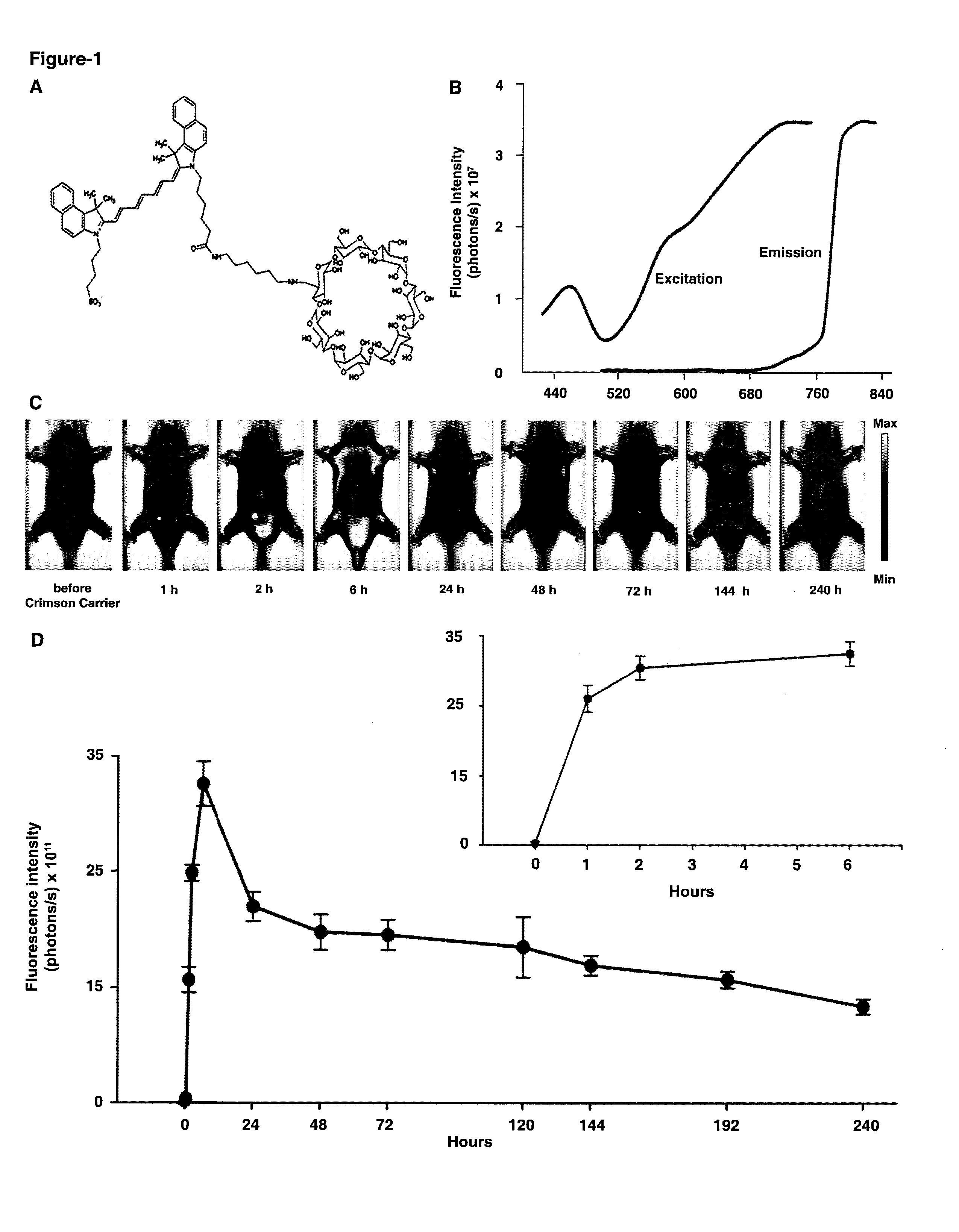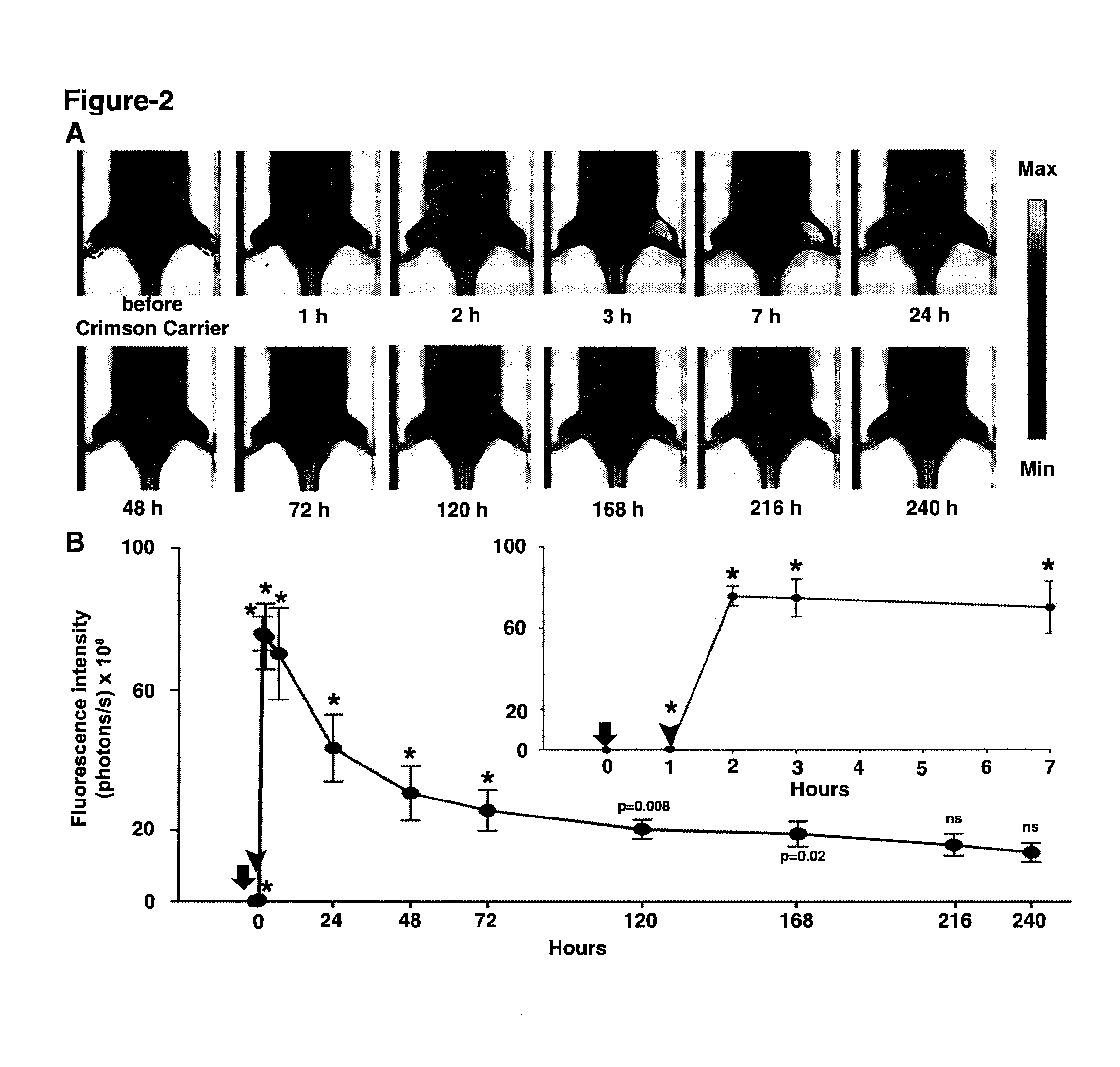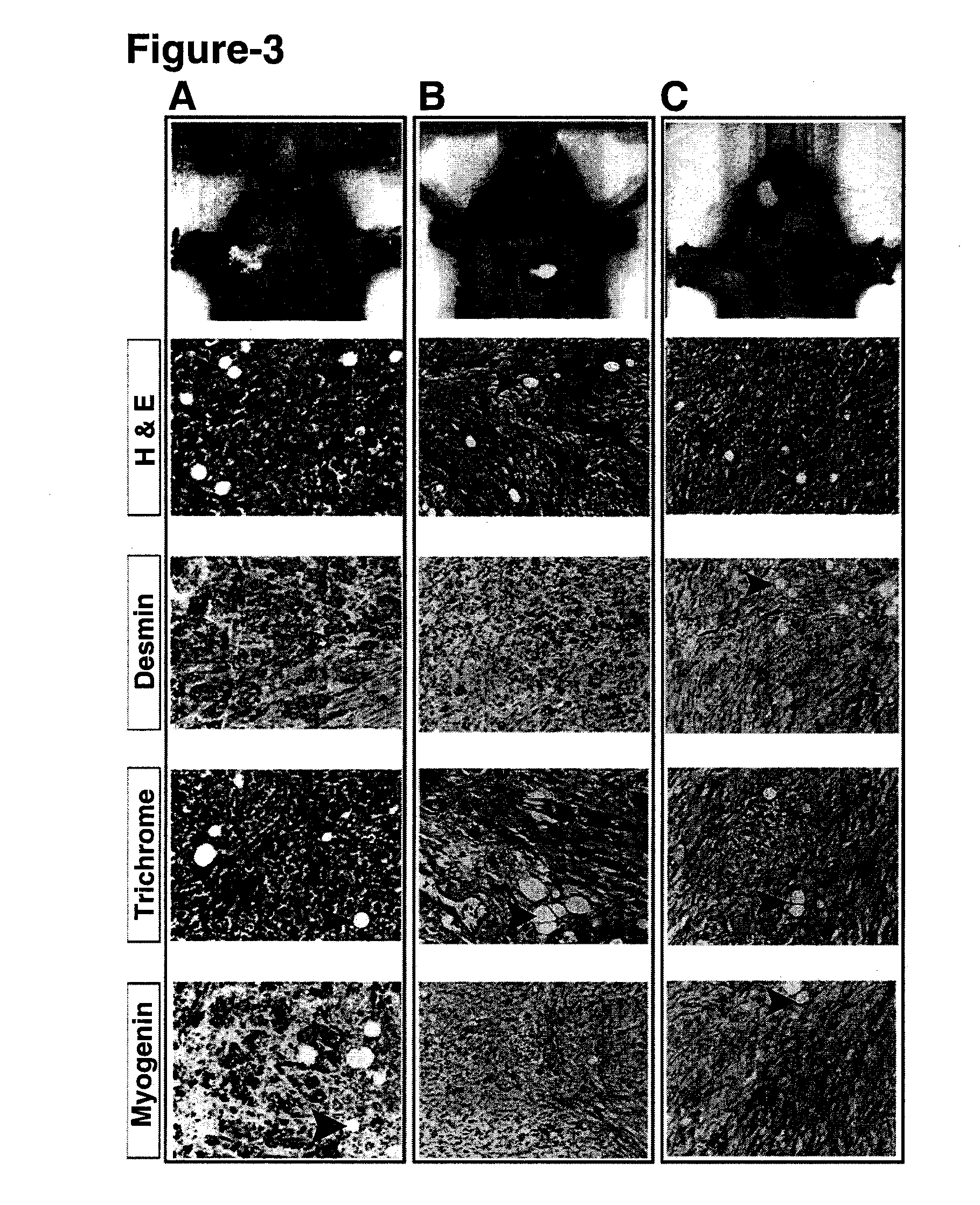Optical imaging agent
an optical imaging agent and agent technology, applied in the field of optical imaging agents, can solve the problems of difficult in vivo fluorescence signal quantification, and achieve the effect of high molecular weigh
- Summary
- Abstract
- Description
- Claims
- Application Information
AI Technical Summary
Benefits of technology
Problems solved by technology
Method used
Image
Examples
examples
Materials and Methods
Contrast Agent
[0081]Compound 1 (C93H132N4O38S) is composed of a β-cyclodextrin ring conjugated to Indocyanine Green (ICG) via a short linker (CH2)6. 1 has a molecular weight of 1946.11 atomic mass unit (amu). The powdered 1 was freshly constituted with phosphate buffer saline (PBS) to a final concentration of 0.2 mM.
Live Animal Imaging
[0082]Optical imaging for all experiments was performed using Xenogen IVIS® Spectrum system (Caliper-Xenogen, Alameda, Calif., USA). All animal procedures were conducted in accordance with the Guidelines for the Care and Use of Laboratory Animals and were approved by the Institutional Animal Care and Use Committee (IACUC) at University of Texas Health Science Center at San Antonio. All images were acquired using epiillumination at excitation wavelength of 745 nm and emission wavelength of 820 nm unless otherwise stated. The camera settings were kept constant at 1 sec exposure time, 4×4 binning, 12.6 cm or 6.5 cm field of view, and ...
PUM
| Property | Measurement | Unit |
|---|---|---|
| visible wavelength | aaaaa | aaaaa |
| NIR) wavelength range | aaaaa | aaaaa |
| emission wavelength | aaaaa | aaaaa |
Abstract
Description
Claims
Application Information
 Login to View More
Login to View More - R&D
- Intellectual Property
- Life Sciences
- Materials
- Tech Scout
- Unparalleled Data Quality
- Higher Quality Content
- 60% Fewer Hallucinations
Browse by: Latest US Patents, China's latest patents, Technical Efficacy Thesaurus, Application Domain, Technology Topic, Popular Technical Reports.
© 2025 PatSnap. All rights reserved.Legal|Privacy policy|Modern Slavery Act Transparency Statement|Sitemap|About US| Contact US: help@patsnap.com



